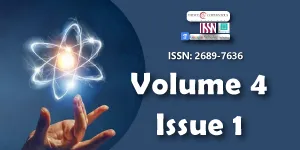Application of algebra to trisect an angle of 60 degree
Main Article Content
Abstract
Trisection of an angle, doubling the cube, squaring the circle, to draw a regular septagon and to deduce Euclid V from Euclid I to IV are the famous classical impossibilities. Recently, Sivasubramanian and Kalimuthu jointly and independently found several solutions for the parallel postulate problem. Their findings have been published in various peer reviewed international journals. In this work, by applying linear algebraic equations the authors have attempted and trisected 60 degree without using a protractor.
Downloads
Article Details
Copyright (c) 2021 Sivasubramanian M, et al.

This work is licensed under a Creative Commons Attribution 4.0 International License.
Licensing and protecting the author rights is the central aim and core of the publishing business. Peertechz dedicates itself in making it easier for people to share and build upon the work of others while maintaining consistency with the rules of copyright. Peertechz licensing terms are formulated to facilitate reuse of the manuscripts published in journals to take maximum advantage of Open Access publication and for the purpose of disseminating knowledge.
We support 'libre' open access, which defines Open Access in true terms as free of charge online access along with usage rights. The usage rights are granted through the use of specific Creative Commons license.
Peertechz accomplice with- [CC BY 4.0]
Explanation
'CC' stands for Creative Commons license. 'BY' symbolizes that users have provided attribution to the creator that the published manuscripts can be used or shared. This license allows for redistribution, commercial and non-commercial, as long as it is passed along unchanged and in whole, with credit to the author.
Please take in notification that Creative Commons user licenses are non-revocable. We recommend authors to check if their funding body requires a specific license.
With this license, the authors are allowed that after publishing with Peertechz, they can share their research by posting a free draft copy of their article to any repository or website.
'CC BY' license observance:
|
License Name |
Permission to read and download |
Permission to display in a repository |
Permission to translate |
Commercial uses of manuscript |
|
CC BY 4.0 |
Yes |
Yes |
Yes |
Yes |
The authors please note that Creative Commons license is focused on making creative works available for discovery and reuse. Creative Commons licenses provide an alternative to standard copyrights, allowing authors to specify ways that their works can be used without having to grant permission for each individual request. Others who want to reserve all of their rights under copyright law should not use CC licenses.
Eves H (1976) An Introduction to the history of Mathematics, Holt, Rhinehart and Winston, New York. Link: https://bit.ly/3tsHPp6
Dunham W (1990) Journey through Genius John Wiley and sons. Link: https://bit.ly/3gndZP4
Stewart I, Theory G (1991) Chapman and Hall, London.
Herstein IN (1964) Topics in Algebra, Blasdell, New York.
Jones A, Morris AS, Person KR (1991) Abstract Algebra and Famous Impossibilities, Springer-Verlag, New York. Link: https://bit.ly/32iZ3cy
Courant R, Robbins H (1941) What is mathematics?, Oxford University Press, New York.
Charles RH (1978) Field Theory and its Classical Problems, Carus Mathematical Monographs, No. 19, Mathematical Association of America.
Sivasubramanian M, Kalimuthu S (2008) On the New Branch of Mathematical Science. Journal of Mathematics and Statistics 4: 122-123. Link: https://bit.ly/3aenOuW
Sivasubramanian M, Senthilkumar L, Raghul Kumar K, Kalimuthu S (2008) On the New Branch of Mathematical Science - Part 2. Journal of Mathematics and Statistics 4: 148-149. Link: https://bit.ly/3siIN64
Sivasubramanian M (2009) Application of Sivasubramanian Kalimuthu Hypothesis to Triangles. Journal of Mathematics and Statistics 5: 90-92. Link: https://bit.ly/3wUxnJn
Sivasubramanian M (2009) A phenomenon in geometric Analysis. Indian Journal of Science and Technology 2: 23 - 24.
Sivasubramanian M (2009) Application of Algebra to Geometry. Indian Journal of Science and Technology 2: 1-2.
Sivasubramanian M (2009) On the parallel postulate. Researcher, Marsland press 1: 58-61.
Sivasubramanian M, Kalimuthu S (2009) A Computer Application in Mathematics. Computers and Mathematics with Applications, Elsevier Publications, The Netherlands.
Kalimuthu S (2009) “Pretty Algebra”, Nature and science, Marshland Press, New York 7: 86-89. Link: https://bit.ly/3wUzqNz
Kalimuthu S (2009) “Beautiful geometry”, Nature and science, Marshland Press, New York 7: 88-89.
Kalimuthu S (2009) For the origin of quantum geometry (Submitted to Applied Mathematics letters)
Kalimuthu S (2009) The parallel postulate-The return of the roaring line. Indian Journal of Science and Technology 2: 6-22. Link: https://bit.ly/32nfc0G

